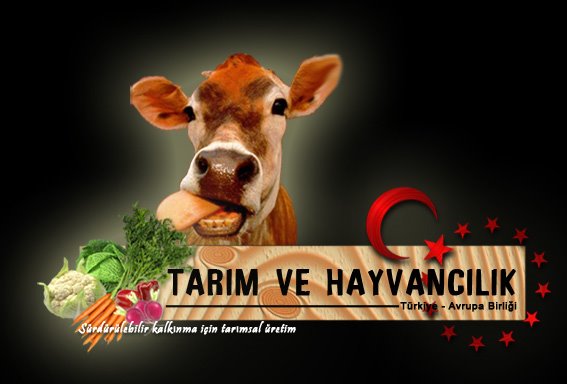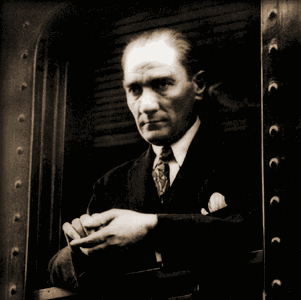This student report was prepared for Ecological Modernization and Rural Development Course during my Erasmus Exchange period in University of Helsinki (January-May 2008). This report graded as 4/5 by the professor. For who want to use some parts of this report please indicate in your references as:
Gürkan, O. 2008. "Ecological Modernization and Rural Development: Old Problems and New Problems: The Changing European Rural Policy Agenda" University of Helsinki, Course Report Theme 2. Web site: www.abtarim.blogspot.com-------
OLD PROBLEMS AND NEW PROBLEMS:
The Changing European Rural Policy Agenda
The establishment of European Community was basically designed on economic co-operation and mutual control of the resources were expected to prevent political and military conflicts in Continental Europe and boost the economic growth in member states, stated by Vihinen [1]. Primary duty for European countries was to establish a common ground for agricultural policy that is very diverse from each other, to supply safe and secure food for their citizens, which were having so many problems to reach food during and after the war years. Reduced rates in production, non-stable markets for farm products and food safety problems.
On the other hand, as stated by Vihinen 1] many other interpretations have been given related to the needs of the establishment, in a general framework these were:
- Agriculture was the major employer and there was a great need to improve incomes in the sector,
- West Germany was interested on France’s industrial market and France was interested on Germany’s agricultural market,
- If agricultural policy remained in the hands of Member States, it would undermine the common policies of other sectors. Different price levels will result the countries with low price levels would have competitive advantages.
For a very first time establishment of a common market was formulized in the so-called SPAAK Report [1] [2]. At the beginning it was designed to encouraging better productivity in the food chain, so that consumers had a stable supply of affordable food, but also to ensure that the EU had a viable agricultural sector as described in the document named "The Common Agricultural Policy Explained"[3]. With other words CAP was introducing production, trade and market oriented view [1]. As believed so far, overcome of the problems mentioned above and shortcomings of disadvantage regions and family farm structure would be possible by increasing the productivity [1]. Treaty of Rome also underlines the required attention on the social structures of agriculture and the disparities between different agricultural regions. However these aims are leave a big space for interpretation [1] and as mentioned by Vihinen [1] “until the early seventies, there was hardly any common structural policy on agriculture”. There were many pages devoted to the structural and social problems in the proposals but they were not detailed and not including practical suggestions.
----------------------------------------
Figure 1: Evaluation of the CAP [1]
----------------------------------------
Authors states that, with a little good will it was possible to form these general objectives the first documented ideas of rural thinking in the framework of CAP. However, the main role of the rural areas was understood as the resource for raw material and labour to other economic sectors.
During the period of high production supports, producers were interested on high input farming because s much as they produce they were getting more support form the Community. As reference to the Jokinen's article [4], he summarizes the period between 1960s - 1990s with increased input rates in agricultural production (chemicalization and high nitrogen input/fertilization). As a result of high production by the 1980s the EU had to contend with almost permanent surpluses of the major farm commodities, some of which were exported, others of which had to be stored or disposed of within the EU[3].
Above-mentioned surplus problems, high protection in trade and social arguments about the impacts of high input farming and also the enlargement of the Community through the Southern and Nordic countries, CAP has taken to Reform Process.
First in 1968, Commissioner Mansholt (MANSHOLT PLAN), introduce a plan includes a structural policy which meant focusing on agricultural factors of production rather than production and rather than thinking in terms of different products, their prices and produced amounts. The plan was mainly constructed on production factors: Labour, land and capital [1]. However plan had been subjected to resistance and not accepted as the proposed form, it brings 3 new socio-structural directives (modernisation of farms, relocation of utilised agricultural lands for structural improvement, and guidance service and retraining of the persons works in agriculture)
Following these reform in year 1973 the improvement memorandum that brings the environmental protection to the sunlight in the CAP. These followed by introduction of the fourth socio-structural directive related to the Less Favourable Areas (mountain and hill farming). This document differs with regional and sectoral interest while others were horizontal and it was very first time that territorial approach was used in agricultural structural policy, and concept of discrimination between regions [1].
----------------------------------------
Figure 2: The CAP : from Past to Present[6]
----------------------------------------
With the joining of new member states (Denmark, Ireland, UK, and followed by Greece, Spain and Portuguese) new agenda has started. Introduction of Integrated Development Programmes and Integrated Mediterranean Programmes the idea of overcoming the regional discrimination and develop and modernization of the socio-structural differences strengthened.
Regarding to the environmental and socio-structural measures most important steps is taken under MacSharry reform. First, the direct payment scheme was introduced, which also affected the input usage rates of the farmers. Second the early retirement of the farmers over 55 years old that creates new employment opportunities for young rural society. Third, new agro-environmental measures.
In year 1999, Agenda 2000, which was inline with MacSharry reforms, has accepted. This agenda strengthen the structural funds and also established an independent environmental policy.
Then 2003 Reform which introduced the Rural Development as the second pillar of the CAP. Introduction of the cross compliance measures.
When we analyse different literature regarding to the development of the Environmental modernization and rural development theory we also notice that above mentioned CAP development timeline fits with the development of the ecological modernization theory somehow. For example, Marsden, T. [5] theory of agro-industrial model fits with the CAP between 1960s to 1990s. As he stated, the agro industrial model sees the nature as something to overcome, or at least held back by continues application of new technologies in the agriculture and food sphere. How we interpreted from the EU dimension, heavy support for the production and not interested on the main factors of production as labour, land and nature.
However with growing interest of the urban public on environmental issues, brings new dimension to agriculture and environmental issues post-productivist model of Marsden [5], which tends to marginalise nature as consumption good to be exploited not by industrial capital but by the urban population. During this period we can also talk about the growing discussions on Human health, Animal Welfare, Food Safety and Environmental protection.
And current situation since the year 2000, introduction of corporate social responsibility term and increasing green activism, can shown as a practical way of Marshden’s sustainable rural development dynamics. Creating new opportunities in the rural areas for rural societies and distribution the agriculture from rural development. Seeing agriculture as part of Rural development not as equal to rural development. Using the agricultures multifunction for rural landscape development, protection of biodiversity, and sustainable use of resources, etc.
At the very beginning EU process the small enterprises was forced to closed and we forced the agricultural enterprises to produce more and standardized products. However, now within the new era we are talking about the “small is good” business. Looking for healthier and not artificial production. We demand for quality and diversity and healthy not for so much standardized production. Awareness of the urban society is one of the supportive act for changes. But also organized rural societies are also demanding this change they demand for more at the moment. Industry needs to follow the pathway shown by the public and their efforts will strengthen the transformation in the environment and rural areas…
References
1. Andersson, K. et al (eds.): Rural Development as Policy and Practice. Chapter 2 by Hilkka Vihinen
2. Eraktan, G., Ören, N., 2005. “AB Ortak Tarm Politikas, Reform Süreci ve Türkiye’ye Etkileri” Türkiye Ziraat Mühendisli i VI. Teknik Kongresi, 1. Cilt, Sy: 23-33, 3-7 Ocak 2005. Milli Kütüphane, Ankara.
3. Anonymous, 2004. "The Common Agricultural Policy Explained", European Commission Directorate General for Agriculture.
4. Jokinen, P. 1998. “Europeanisation and Ecological Modernisation: Agri-Environmental Policy and Practices in Finland” International workshop on ecological Modernization in university of Helsinki, Finland.
5. Marsden. T.K.: The Condition of Rural Sustainability, chapter 1
6. Trarieux, J-M., 2007. « Farm Policy Reform: The European, Experience ». American Farm Bureau Federation Annual Convention. Presentation.



Hiç yorum yok:
Yorum Gönder